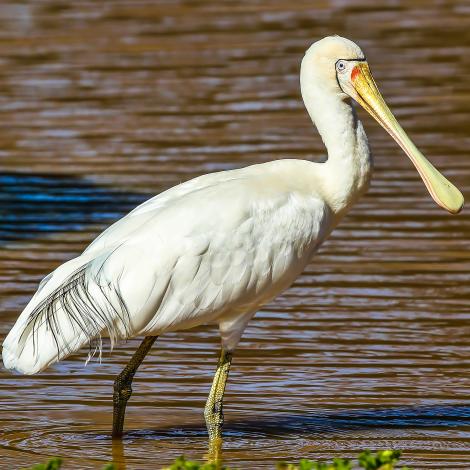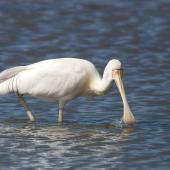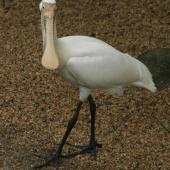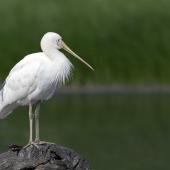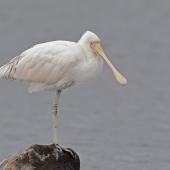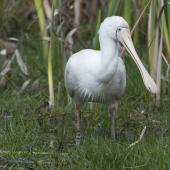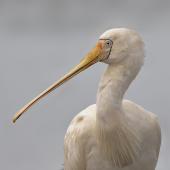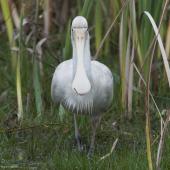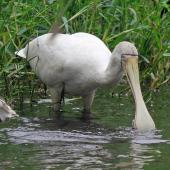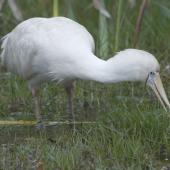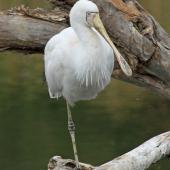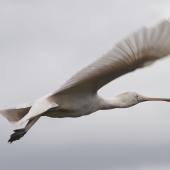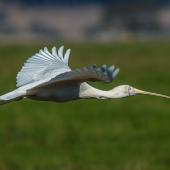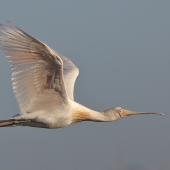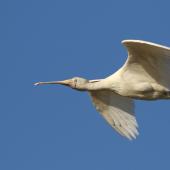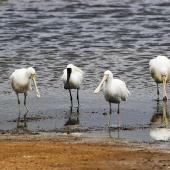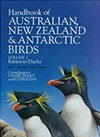Yellow-billed spoonbill
Platalea flavipes Gould, 1838
Order: Pelecaniformes
Family: Threskiornithidae
Other names: yellowbilled spoonbill, yellow billed spoonbill
Geographical variation: Nil
Yellow-billed spoonbills in Australia respond rapidly to rainfall, breeding while temporary swamps remain full. The temporary nature of many of Australia’s inland wetlands and the potential mobility of these birds suggest that they should arrive in New Zealand more often. So far two only are known to have come across the Tasman Sea, whereas the very similar royal spoonbill arrived more frequently, established a breeding population and is becoming more common year by year.
Identification
The yellow-billed spoonbill is a large white bird with long legs and a long bill, flattened at the end. The yellow-billed spoonbill differs from the much more common royal spoonbill in having the legs and bill pale yellow instead of black, and the plumage is cream coloured rather than pure white. They fly with the neck outstretched like other ibises and spoonbills, but the lack of any black and the prominent yellow bill are distinctive. The typical flight pattern consists of periods of wing beats followed by glides but they can soar up to high altitudes.
Voice: Usually quiet but may give a loud call described as a coughing-hiss.
Similar species: royal spoonbill has a black bill and legs.
Distribution and habitat
Yellow-billed spoonbills are widespread in Australia, mainly in the eastern and northern parts of the continent. They are absent from Tasmania. Their movement patterns are not well known, possibly seasonal in the north but not in the south. Vagrants to Lord Howe and Norfolk Island and New Zealand occurred during or after periods of high rainfall in inland Australia. They mainly utilise temporary or permanent freshwater wetlands, and are much less frequently found in estuaries or harbours. They feed in shallow, open water and may use very small water bodies.
New Zealand records
Two records: Rangaunu Bay, Northland (August 1976 to 1981), and Te Whiti, Wairarapa (December 1981).
Threats and conservation
In Australia the range of yellow-billed spoonbills has increased since European settlement as they use farm dams and channels. However, they are intolerant of disturbance, and many natural wetlands used for feeding and nesting have been degraded by draining, clearing, or increased salinity.
Behaviour and ecology
Yellow-billed spoonbills may be solitary or gather in small flocks. The bird at Rangaunu Bay kept company with two royal spoonbills and a white ibis. Feeding is tactile, sweeping the bill from side to side, walking steadily through the water but occasionally running to catch prey.
Food
Yellow-billed spoonbills mainly eat aquatic insects, with smaller numbers of freshwater crayfish, shrimps and fish.
Websites
References
Billing, A.E. 1977. The first occurrence of yellow-billed spoonbill (Platalea flavipes) in New Zealand. Notornis 24:192.
Marchant, S.; Higgins, P.J. 1990. Handbook of Australian, New Zealand and Antarctic birds. Volume 1, Australian pelican ducks. Oxford University Press, Melbourne.
Recommended citation
Southey, I. 2013 [updated 2022]. Yellow-billed spoonbill. In Miskelly, C.M. (ed.) New Zealand Birds Online. www.nzbirdsonline.org.nz
Yellow-billed spoonbill
- Breeding season
-
- Jul
- Aug
- Sep
- Oct
- Nov
- Dec
- Jan
- Feb
- Mar
- Apr
- May
- Jun
- Egg laying dates
-
- Jul
- Aug
- Sep
- Oct
- Nov
- Dec
- Jan
- Feb
- Mar
- Apr
- May
- Jun




